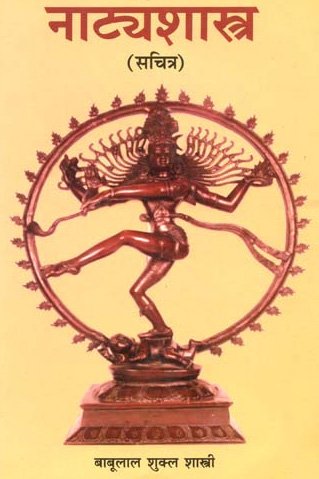Bhashanga, Bhāṣāṅga, Bhashamga: 2 definitions
Introduction:
Bhashanga means something in Hinduism, Sanskrit. If you want to know the exact meaning, history, etymology or English translation of this term then check out the descriptions on this page. Add your comment or reference to a book if you want to contribute to this summary article.
The Sanskrit term Bhāṣāṅga can be transliterated into English as Bhasanga or Bhashanga, using the IAST transliteration scheme (?).
In Hinduism
Natyashastra (theatrics and dramaturgy)
Source: Wisdom Library: Nāṭya-śāstraBhāṣāṅga (भाषाङ्ग) or bhāṣāṅgarāga is defined as “those that slowly emerge when the rāga is thought of”, according to Umāpati in his 9th century Aumāpatam (exposition on music and dance).

Natyashastra (नाट्यशास्त्र, nāṭyaśāstra) refers to both the ancient Indian tradition (shastra) of performing arts, (natya—theatrics, drama, dance, music), as well as the name of a Sanskrit work dealing with these subjects. It also teaches the rules for composing Dramatic plays (nataka), construction and performance of Theater, and Poetic works (kavya).
Languages of India and abroad
Kannada-English dictionary
Source: Alar: Kannada-English corpusBhāṣāṃga (ಭಾಷಾಂಗ):—[noun] (mus.) a mode that occasionally takes a note or notes, that are not in the main mode from which it is derived, to enhance the beauty.
Kannada is a Dravidian language (as opposed to the Indo-European language family) mainly spoken in the southwestern region of India.
See also (Relevant definitions)
Starts with: Bhashamgakapi.
Full-text: Ragalakshana.
Relevant text
No search results for Bhashanga, Bhāṣāṅga, Bhasanga, Bhashamga, Bhāṣāṃga, Bhāṣānga, Bhasamga; (plurals include: Bhashangas, Bhāṣāṅgas, Bhasangas, Bhashamgas, Bhāṣāṃgas, Bhāṣāngas, Bhasamgas) in any book or story.